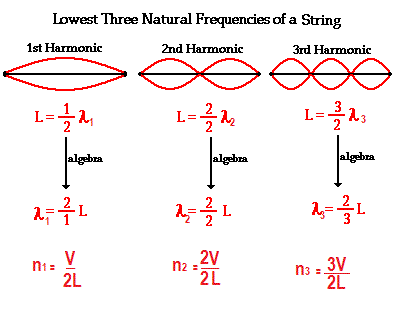Question #2148b
1 Answer

Given that the velocity of stationary wave produced in a stretched string depending on its tension (T)and its mass per unit length (m) is
As shown in above figure the wave lengths
For first i th harmonic
where
For 1st harmonic wave length
For 2nd harmonic wave length
For 3rdharmonic wave length
So
For 1st harmonic, frequency
For 2nd harmonic, frequency
For 3rd harmonic, frequency

